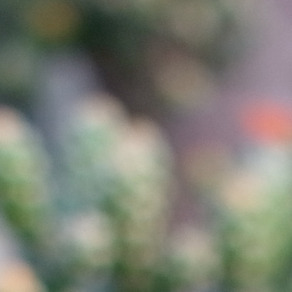GXR情報
The A12 28mm F2.5 GR Lens as a Great Second Camera on Vacation (part 1)
2011-06-25
こんにちは。ふーです。GR BLOGは海外の方にもご覧いただいているようですので、先日公開してご好評いただいている「特別寄稿:旅のサブカメラにも最高の画質を GR LENS A12 28mm F2.5」を特別に英語化して掲載します。今回は前編の英語版です。
====================================================
Paradise of the Pacific makes a great backdrop for the rainbow.
GXR A12 28mm F2.5 GR
ISO200, F5, 1/200 sec., -0.3EV
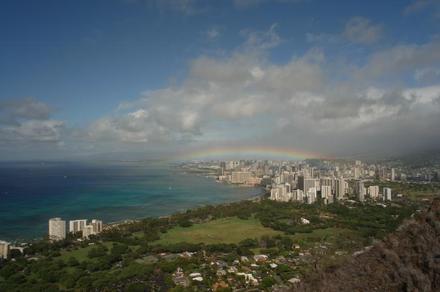
Introduction
Long-awaited Debut of a 28mm-equivalent APS-C Camera unit with a 3:2 Aspect Ratio
by TRK
In the beginning, RICOH GXR system was like an authentic high-end compact camera (S10 24-72mm) which could transform into a "stealth" APS-C camera (A12 50mm) or a super zoom compact (P10 28-300mm) by changing the lens and image sensors of various sizes at the same time as interchangeable camera units. Among them, my favorite was the A12 50mm F2.5 GR unit, which produced overall image quality comparable to that of DSLRs with a prime lens of similar focal length. (I introduced its review in June, 2010 ... in Japanese only.)
Naturally, I am happy to see the debut of the new A12 28mm F2.5 GR unit with the same type of image sensor as the 50mm unit. Thanks to the new unit, the GXR system now can be used like an interchangeable lens camera built around an APS-C sized sensor.
I quickly found several strong points by using a preproduction A12 28mm unit. First, its angle of view of 28mm is obtained at 3:2, just like a film-camera. Second, its slim lens barrel made the whole body as small as a mirrorless interchangeable lens camera with a pancake lens, or as a fixed-lens high-end camera with an APS-C sized sensor. Next, the auto-focus performance was much improved over the A12 50mm. (The good news is, the new AF algorithm can be applied to the venerable A12 50mm unit by updating the firmware to V1.29.) Last but not least, its image quality was great, despite the combination of pancake-like lens and relatively large sensor.
Later, I had an opportunity to snapshoot real-world photos with the A12 28mm camera unit along with a production model of A12 50mm loaded with the new firmware V1.29 in Hawaii, so let me share with you how the GXR A12 units performed, along with behind-the-scenes stories, in a two-part series.
Image Quality
In the first installment, I will focus on the image quality of the A12 28mm GR unit in broad daylight, with a sidebar on how the unit struck the balance between size and optic performance.
1. Edge-to-edge Sharpness
For those pixel peepers (I am one of them), let me start with comparing the center and corner sharpness of the 28mm lens. When using a wide-angle lens, photographers tend to close down the aperture, but I purposely took the following photos at various F-numbers with F5.6 the minimum aperture. Note all the photos are shot with in-camera JPEG, FINE, with Image Setting set to Standard.
#496 ISO400, F3.5, 1/1150
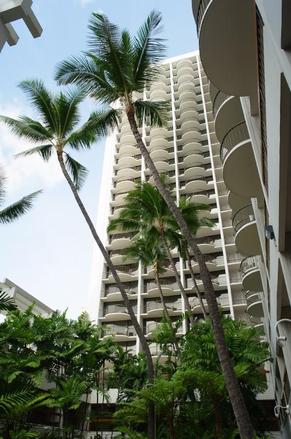
Fronds of all three palm trees are in the depth of field. The fronds are all tack sharp at F3.5, which is typically the smallest F-number for standard zoom lenses.
Top
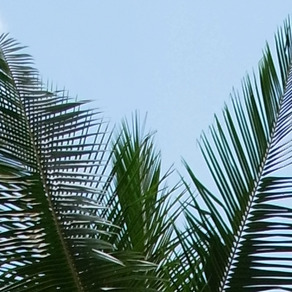
Center
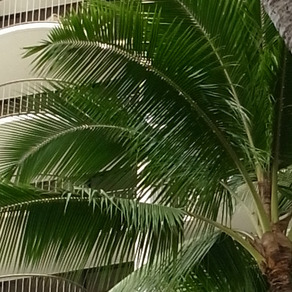
#378 ISO200, F4.5, 1/1740
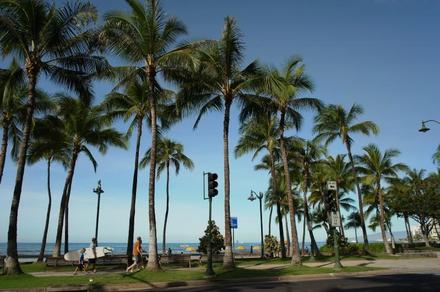
Fronds in the upper center and the left corners are all tack sharp at F4.5
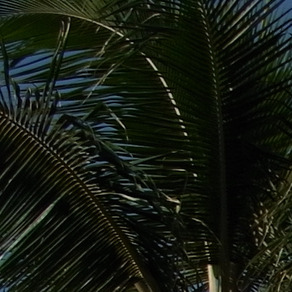
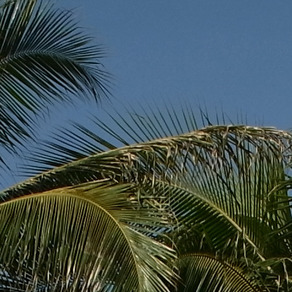
#345 ISO200, F3.2, 1/1520
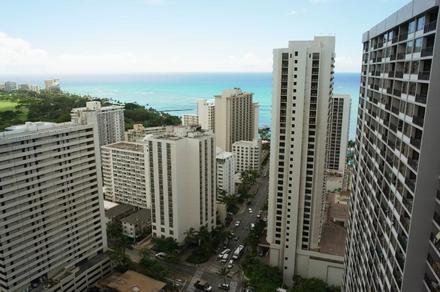
Unfortunately, ocean view from the condo means lots of buildings. The corner sharpness compared to the center at F3.2 is better than expected..
Top right corner

Center
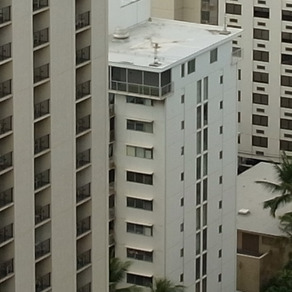
Flush right margin center
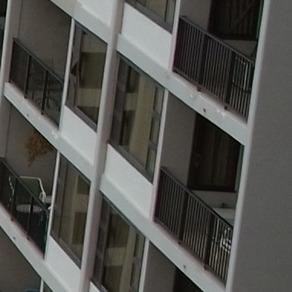
2. Texture and Tone
Sharpness is not the only factor in determining image quality. The A12 28mm realizes natural rendition of life-like texture and tone of various materials, which I expect from the APS-C sized sensor in combination with superb glass elements.
#443 ISO400, F2.5, 1/570 sec.

He was a hungry goat, first licked my fingers, and then tried to eat them.
With a pixel-peep, it is easy to tell each strand of fur is thicker than that of cats or dogs. In addition, thanks to the wider pixel pitch of an APS-C sized sensor, the darkest parts of strands are not smudged or water-colored.
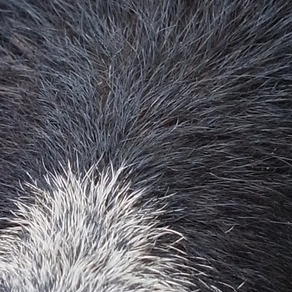
#384 ISO200, F2.5, 1/540 sec.

Texture and tone of the subject is as important as (or in some cases, more so than) sharpness.

#481 ISO200, F2.5, sec.
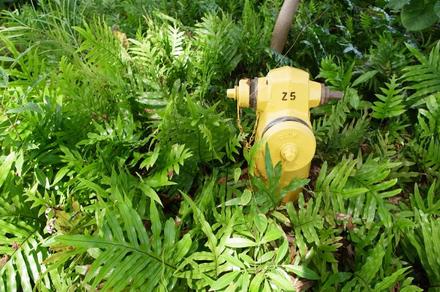
Life-likeliness of the green frond and yellow paint.
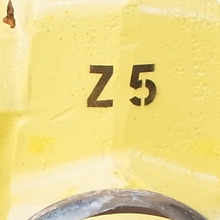
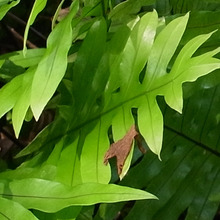
#540 ISO200, F5, 1/2500 sec.
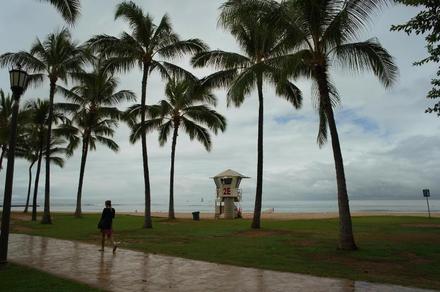
Harmony of the texture of wet stone surface, the tone of the gray sky and sea, and the sharpness of a lifeguard tower.
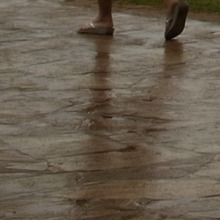
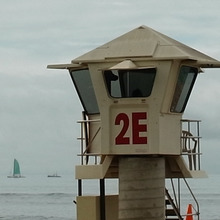
3. Ghosting / Flare
The A12 28mm delivers sharp images even against direct harsh light in the frame. Ghosting is rare to be seen.
#429 iSO400, F13, 1/1300 sec.
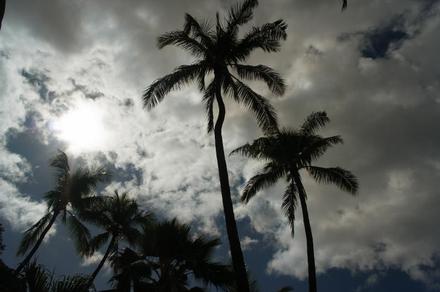
When the two waves were crashing at a right angle, I framed the sky and the sea at 50:50, with the sun a little off to the left.
#499 ISO200, F3.5, 1/410
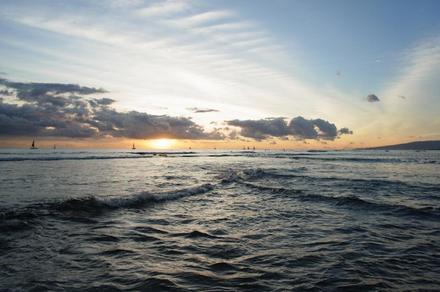
When a lone surfer made his way across the beach, the sun began to appear from behind the clouds. I still remember the sound of breaking waves.

Fronds in the upper center and the left corners are all tack sharp at F4.5


#345 ISO200, F3.2, 1/1520

Unfortunately, ocean view from the condo means lots of buildings. The corner sharpness compared to the center at F3.2 is better than expected..
Top right corner

Center

Flush right margin center

2. Texture and Tone
Sharpness is not the only factor in determining image quality. The A12 28mm realizes natural rendition of life-like texture and tone of various materials, which I expect from the APS-C sized sensor in combination with superb glass elements.
#443 ISO400, F2.5, 1/570 sec.

He was a hungry goat, first licked my fingers, and then tried to eat them.
With a pixel-peep, it is easy to tell each strand of fur is thicker than that of cats or dogs. In addition, thanks to the wider pixel pitch of an APS-C sized sensor, the darkest parts of strands are not smudged or water-colored.

#384 ISO200, F2.5, 1/540 sec.

Texture and tone of the subject is as important as (or in some cases, more so than) sharpness.

#481 ISO200, F2.5, sec.

Life-likeliness of the green frond and yellow paint.


#540 ISO200, F5, 1/2500 sec.

Harmony of the texture of wet stone surface, the tone of the gray sky and sea, and the sharpness of a lifeguard tower.


3. Ghosting / Flare
The A12 28mm delivers sharp images even against direct harsh light in the frame. Ghosting is rare to be seen.
#429 iSO400, F13, 1/1300 sec.

When the two waves were crashing at a right angle, I framed the sky and the sea at 50:50, with the sun a little off to the left.
#499 ISO200, F3.5, 1/410

When a lone surfer made his way across the beach, the sun began to appear from behind the clouds. I still remember the sound of breaking waves.
#819 ISO200, F8, 1/800 sec. -0.3EV
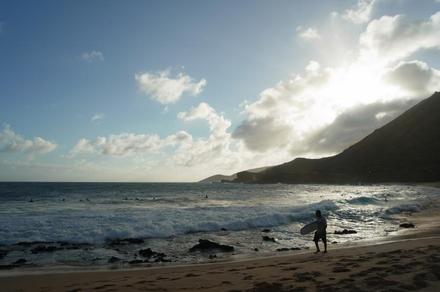
Comparison with A12 50mm. A serene beach with breakwaters.
#711 IS200, F5.6, 1/500 sec. -0.3EV
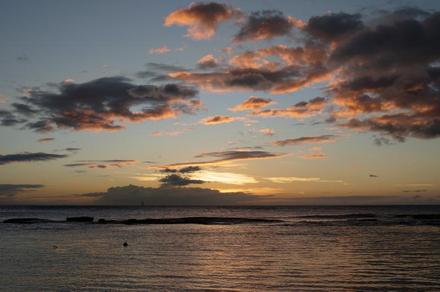
Occasional flare is visible when the light is right outside the frame as in the following sample. Since the lens coating cannot fight against this kind of light, the result could be worse depending on the angle of the light source. An easy solution to this is to mount a lens shade <click here for the product page>. Unfortunately, it is not included in the package, but this optional square lens shade works well and also gives a nicer look to the camera.
*Note: remove the shade when using the pop-up flash.

Comparison with A12 50mm. A serene beach with breakwaters.
#711 IS200, F5.6, 1/500 sec. -0.3EV

Occasional flare is visible when the light is right outside the frame as in the following sample. Since the lens coating cannot fight against this kind of light, the result could be worse depending on the angle of the light source. An easy solution to this is to mount a lens shade <click here for the product page>. Unfortunately, it is not included in the package, but this optional square lens shade works well and also gives a nicer look to the camera.
*Note: remove the shade when using the pop-up flash.
#484 ISO400, F4.5, 1/1870 sec.
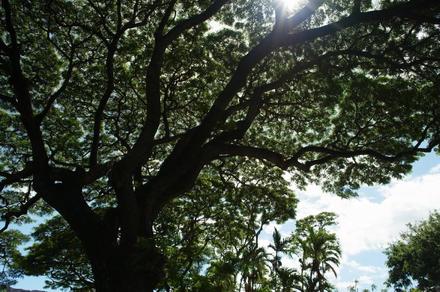
4. Close-up and Bokeh
Without the Macro mode, some may argue this lens is not Ricoh-like. At least, you can get a little closer to the subject than most interchangeable wide-angle lenses, and the background bokeh at this distance is very smooth.
A workaround is a 40.5mm close up lens. How you consider this is up to you, but since it is a trade off with the size of the lens, I'd prefer the way it is now.
#428 ISO400, F4.0, 1/1620 sec.
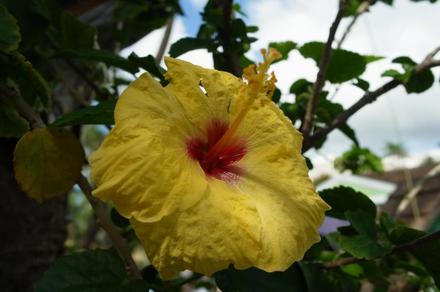
Focal Plane
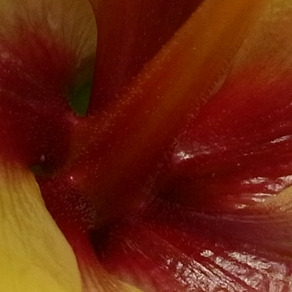
Bokeh

Sitting side-by-side with a baboon? He is behind glass.
#461 ISO400, F3.5, 1/133 sec.

Focal Plane
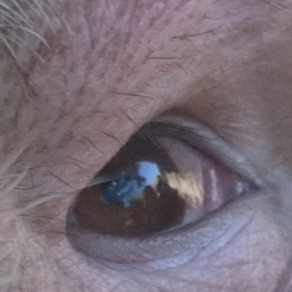
Bokeh
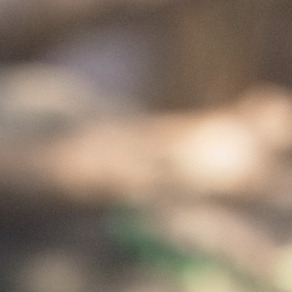
#389 ISO200, F2.5, 1/233 sec.

Focal Plane

Bokeh

4. Close-up and Bokeh
Without the Macro mode, some may argue this lens is not Ricoh-like. At least, you can get a little closer to the subject than most interchangeable wide-angle lenses, and the background bokeh at this distance is very smooth.
A workaround is a 40.5mm close up lens. How you consider this is up to you, but since it is a trade off with the size of the lens, I'd prefer the way it is now.
#428 ISO400, F4.0, 1/1620 sec.

Focal Plane

Bokeh

Sitting side-by-side with a baboon? He is behind glass.
#461 ISO400, F3.5, 1/133 sec.

Focal Plane

Bokeh

#389 ISO200, F2.5, 1/233 sec.

Focal Plane

Bokeh
#475 ISO400, F3.5, 1/176 sec.
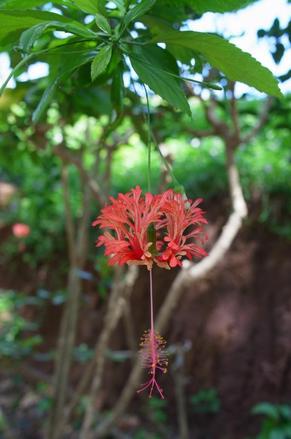
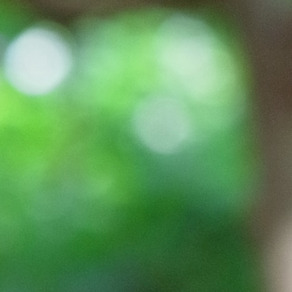
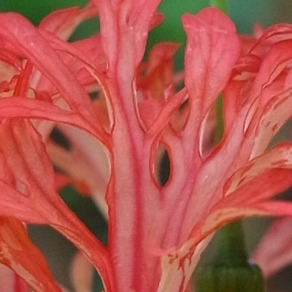
5. Point Light Source Bokeh
A12 28mm incorporates rounded diaphragm, meaning the bokeh created by point light do not have jagged edges when the aperture is stopped down a notch or two.
#399 ISO200, F2.5, 1/111 sec.

Focal Plane

Bokeh
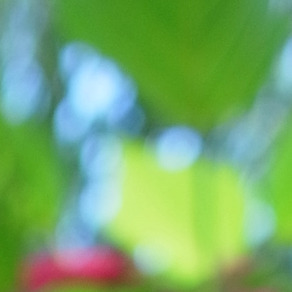
#422 ISO400, F4, 1/2170
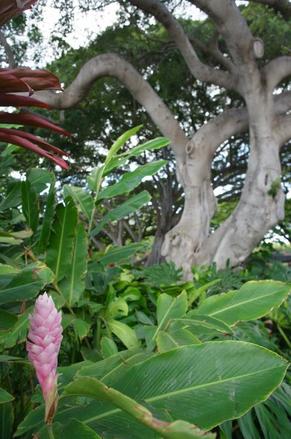
Focal Plane
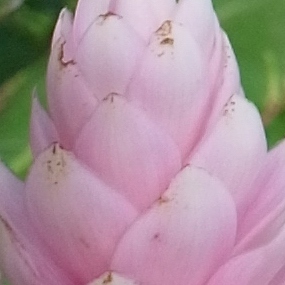
Bokeh of Point Light Source
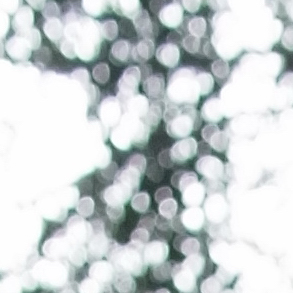
Wrap-up
As you have seen, the A12 28mm GR camera unit produces excellent image quality despite the combination of its pancake-like thin lens barrel and large-in-class APS-C sized sensor. Firstly, the lens barrel slightly extends with the power on, but it is mostly because the GXR system is free from the constrains of a lens mount, e.g. flange focal length, etc., to allow each lens to have the most optimal optics and image sensor layout. Another example is that A12 28mm and 50mm units don't even share the low pass filter (LPF), because different optics require different specification of cutoff frequency, etc. for better overall image quality.
A12 28mm F2.5
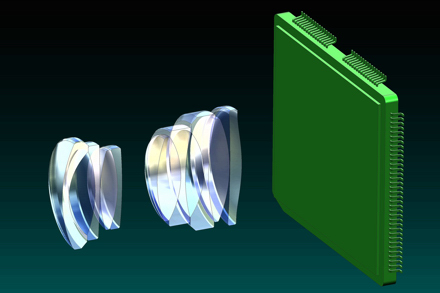
A12 50mm F2.5
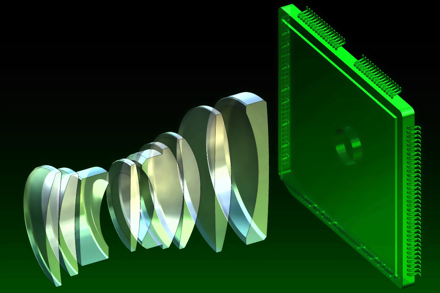
In this week's installment, we have seen that total design of lens and image sensor combination of the A12 28mm unit leads to excellent image quality. In other words, the GXR system is designed to deliver the image quality of a high-end fixed lens APS-C camera in the form of an interchangeable lens system. I think this main feature will become clearer when the two new A12 units will be released later this year.
Next week, I will introduce another merit of the system by using hand-held nightscapes.
